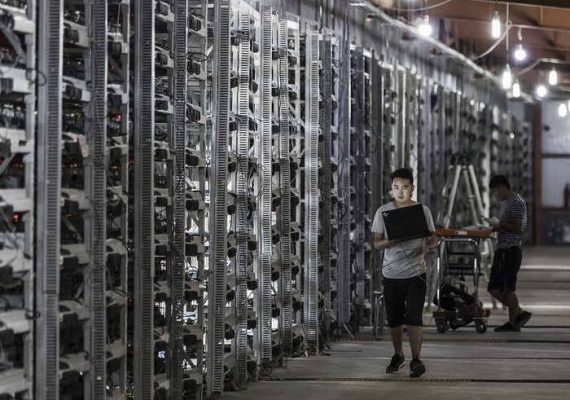Crypto miners play a huge role in the crypto ecosystem. Crypto miners are responsible for allowing the cryptocurrencies to get rid of third parties. Crypto miners are the ones responsible for validating transactions. However, the process of validating transactions can be quite complicated and costly. Over the years, it requires high-end computers that run 24/7. One of the biggest criticisms about crypto mining practices is that it requires a large amount of energy.
But there is no denying that the Bitcoin miners today are also affected by the bearish market. To give you an idea just how much the market has shrunk since 2017, Bitcoin which even reached near $20K in mid-December stumbled as low as around $5,700 this year. And now, Bitcoin is simply floating around $6,500 range.
Taiwan Semiconductor Manufacturing Company (TSMC) have forecasted about the weakening demand for crypto mining hardware in 2018. Lora Ho who is the chief financial officer and senior vice president of finance for TMSC has predicted that there will be a declining demand for their crypto hardware to the extent that it will offset the growth that is going to be generated via the sales of the 7-nanometer chips.
According to Ho: “Moving into fourth quarter despite the current market uncertainties, our business will benefit from the continuous steep ramp of 7-nanometer for several high-end smartphones as well as the demand for 16/12-nanometer for the launches of new generation GPU and AI. However, this growth will be partially offset by continued weakness in cryptocurrency mining demand and inventory management by our customers”.
CC Wei TSMC’s chief executive officer and vice chairman reiterated what Ho mentioned and was also open about the negative impact of the “further weakening of cryptocurrency mining demand”.
No Longer a Place for Small-Scale Miners
The crypto mining industry has evolved over the years. In fact, today, it becomes harder for small-time miners to earn from their operations. Majority of the collective hash rate from the Bitcoin network can now be found in large-scale operations mainly in China. And also, a lot of these crypto miners are holding on to their cryptocurrencies waiting for another bull run.
Reduced Annual Growth for TSMC
Considering all the different factors at play, Wei thinks that the 2018 growth will be around 6.5%. This is shorter than the expected growth of 7% to 9% growth that was initially predicted earlier. According to Ho, the fourth quarter revenue will most likely fall between $9,35 billion and $9.45 billion. This is equivalent to a 10.7% sequential increase for TSMC’s revenue.
Will There be an Increased Demand for Mining Hardware?
What could actually increase the demand for mining hardware? Logically, there should be another bull run in order to get more miners to continue their operations. In 2018, regulatory changes triggered a bearish market for the niche. Until today, many are waiting for institutional investors to participate in the crypto market in order to have another bull run.
The likes of ICE and Goldman Sachs have already tried the crypto market. However, it seems that we are still in the early stages of institutional investor adoption.










